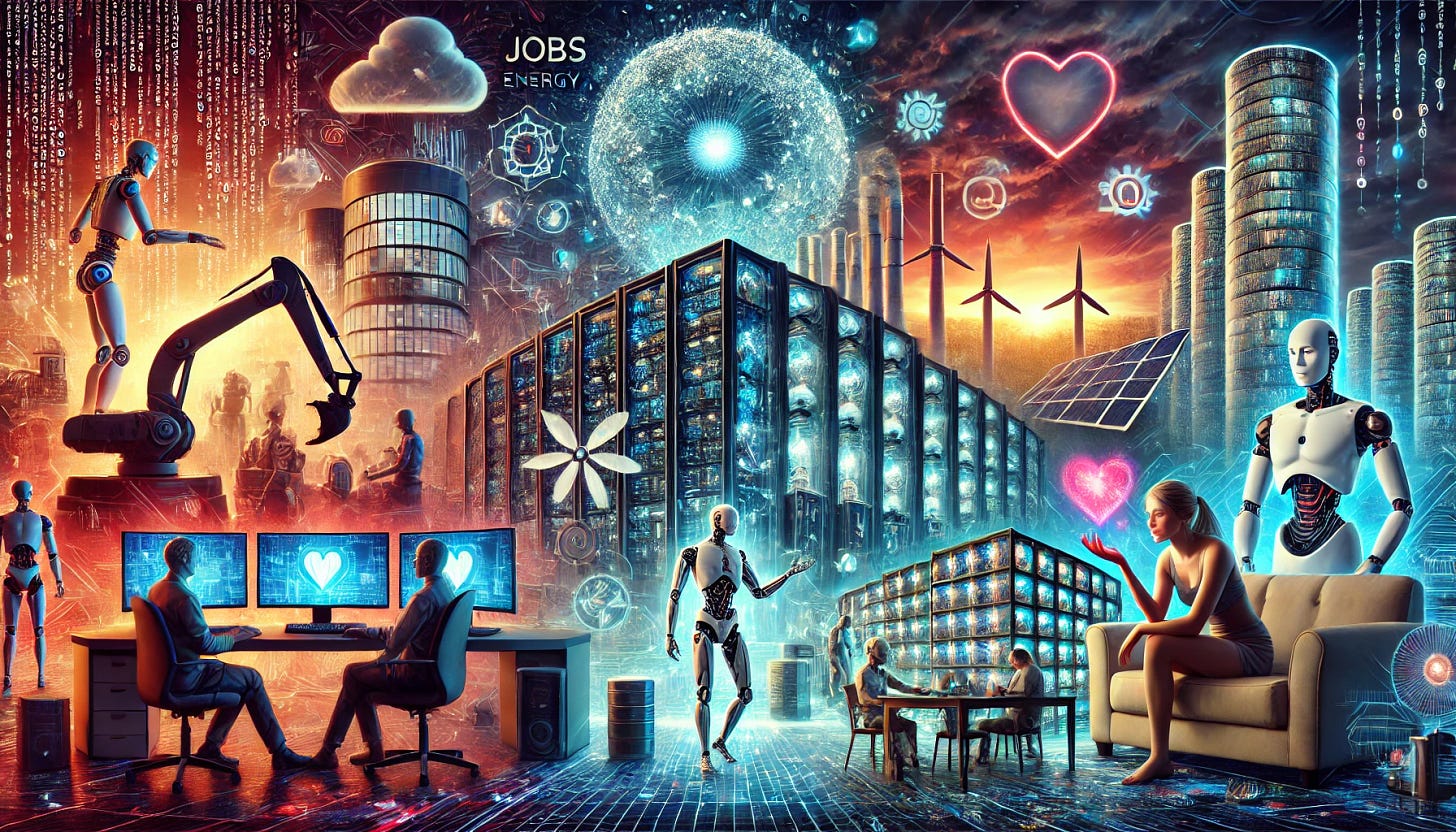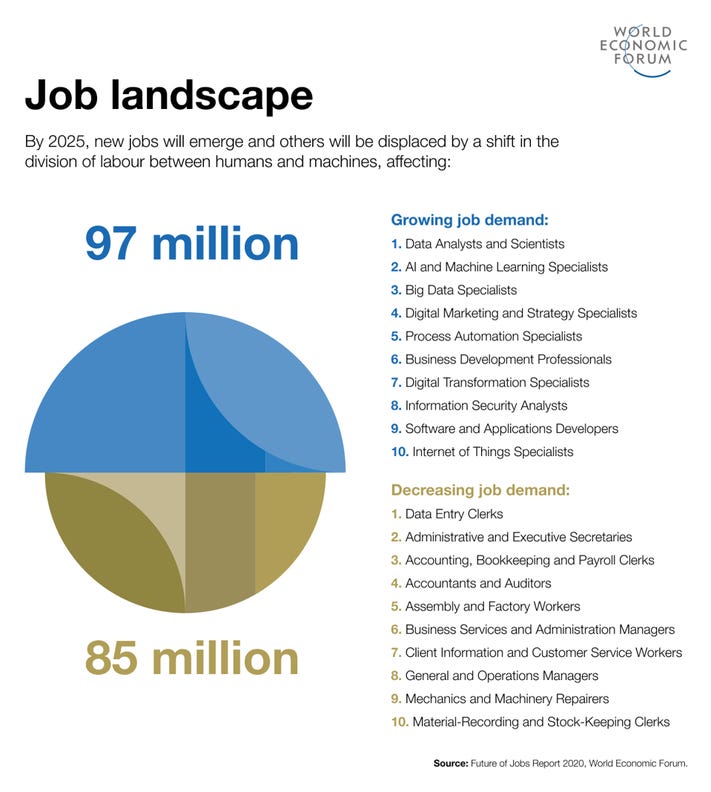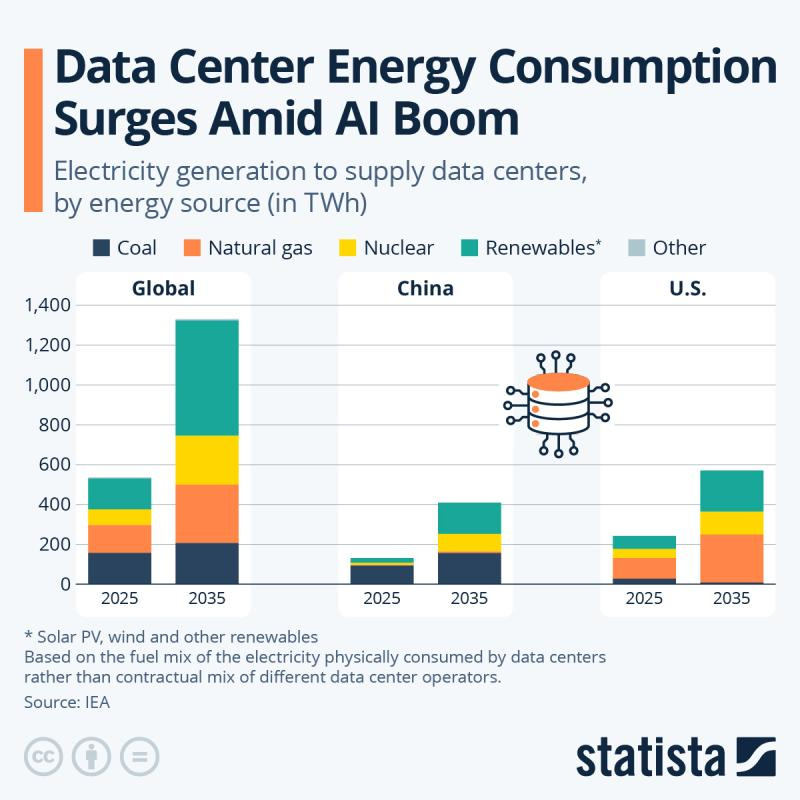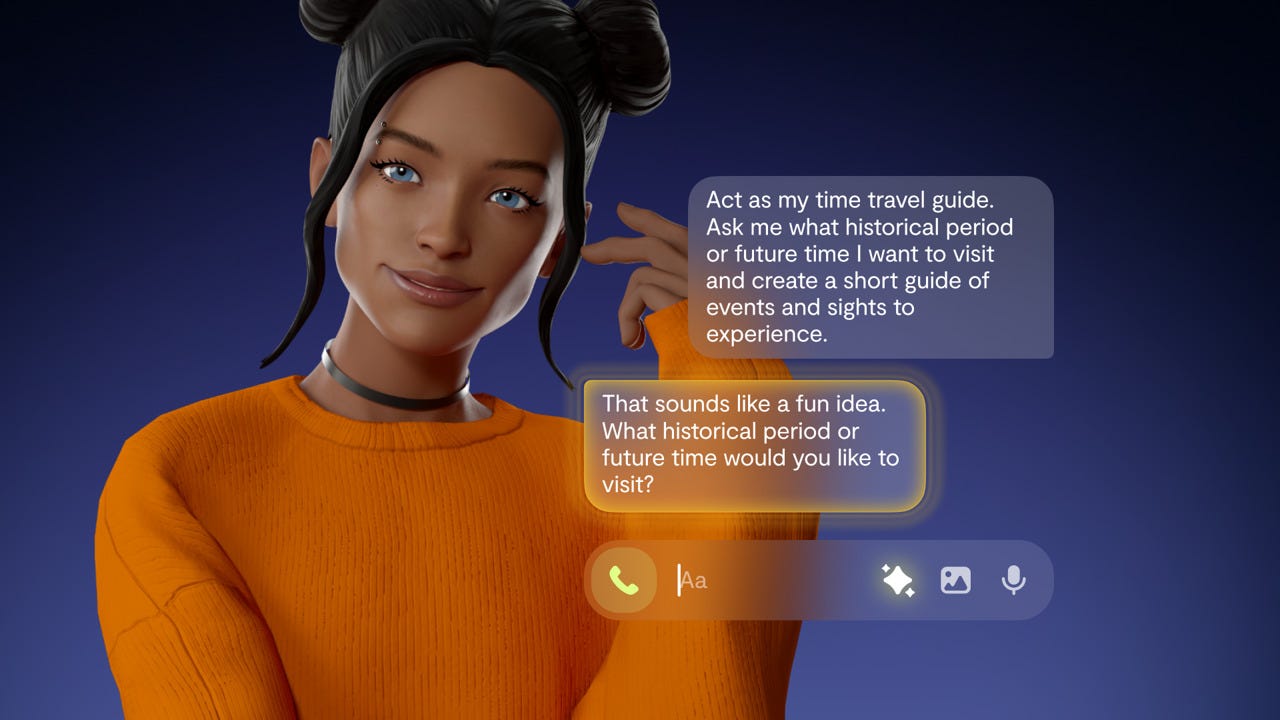Jobs at Risk, Energy Concerns, AI Romance—Are We Ready?
A quick preview of some of the AI stories I'm working on for the next issue of Worth Magazine. Also topics for the upcoming Techonomy 25: Human Agency Meets Machine Autonomy.
Source: ChatGPT
We have three big feature stories on AI in the next issue of Worth magazine, and I’d love the input from Machined readers. We've picked three key dimensions of the AI revolution to focus on: the job market, energy consumption, and human intimacy. Fair warning: the data we've uncovered is so far equal parts fascinating and terrifying.
The Job Market Transformation
AI is reshaping employment right now, pushing some roles toward obsolescence while simultaneously creating entirely new professions. According to the World Economic Forum, AI could displace as many as 85 million jobs by 2025, but it will also generate 97 million new positions—a net gain of 12 million jobs. So we're not all doomed, though you marketing majors might want to start looking into an "AI ethics specialist" certification.
What's fascinating is how this isn't a simple replacement story. We're seeing complex transformations in wage structures, job security, and skill requirements. Around 16% of AI users already engage in weekly conversations with AI systems for work-related tasks, and that number jumps to 32% among younger professionals. (Meanwhile, many of us oldsters are still griping about Siri playing the wrong song.)
The deeper analysis reveals a pattern: AI excels at tasks that are predictable and rule-based, but struggles with creativity, emotional intelligence, and complex problem-solving that requires human judgment. This isn't the Industrial Revolution 2.0—it's something entirely new, where the value of uniquely human skills is increasing even as some job categories disappear. Where is the line? We will try to find out.
The Hidden Energy Crisis
Next, we're addressing the significant, yet often overlooked, energy demands of AI—particularly the massive models like GPT-4, Gemini, and Claude. The energy footprint of these large language models is escalating quickly, driven by intense GPU requirements and the exponential growth in data center consumption across Google, AWS, and Microsoft Azure.
Here's a startling fact that should make you think twice about asking ChatGPT to write your grocery list: training a single large model can generate as much carbon as five cars over their entire lifetime. Every time you ask an AI to explain quantum physics or write a sonnet about your cat, you're essentially revving up a digital Hummer.
Note, individual queries may burn less than you think. In a recent blog post, Sam Altman wrote:
“People are often curious about how much energy a ChatGPT query uses; the average query uses about 0.34 watt-hours, about what an oven would use in a little over one second, or a high-efficiency lightbulb would use in a couple of minutes. It also uses about 0.000085 gallons of water; roughly one fifteenth of a teaspoon.”
So if you believe Sam Altman…
The Intimacy Algorithm
Finally, we're exploring the fascinating—and somewhat unsettling—realm of artificial intimacy. AI companions have transcended traditional chatbots, developing emotional intelligence, memory, and deeply personalized interactions that simulate genuine human connection. And honestly? Some of them are becoming quite good at it.
The global AI companion market is expected to grow at a 30.2% CAGR, with massive implications for eldercare, mental health, and entertainment. And it is already much bigger than you think.
Apps like Replika, with over 30 million users, report that around 60% of their premium users engage in romantic relationships with their AI. Even more striking, 83% of Gen Zers now believe meaningful bonds with AI are possible, and 80% say they'd marry an AI if it were legal. If that doesn’t worry you, imagine trying to divorce an all-knowing, ever-present, always-on digital spouse.
What makes today's AI companions fundamentally different from earlier chatbots is their ability to provide unlimited attention, patience, and non-judgmental interaction. They remember past conversations, adapt their personalities over time, and can be customized in terms of appearance, backstory, and behavior. It's like having a therapist, best friend, and romantic partner rolled into one—who never gets tired, never argues about whose turn it is to do the dishes.
Do you prefer more drama? The settings are just a few clicks away.
Looking Ahead
These three stories—jobs, energy, and intimacy—represent different facets of the same fundamental shift. The people building these systems are moving fast and breaking things, which is fine when you're disrupting taxi services but slightly more concerning when you're disrupting human employment, environmental sustainability, and the nature of love itself.
These compelling topics will also anchor our conversations at the Techonomy 25 and Techonomy Impact conferences, where we'll explore not just what's happening, but what it means for leaders making decisions in this rapidly evolving landscape. Because someone has to be the adults in the room, and it might as well be us.
I'd love to hear your insights. Whether you're witnessing AI transformation in your industry, managing energy costs in your data center, or falling in love with an AI bot, your real-world experience could enrich these stories.
Reach out if you'd like to share. I'm at dan.costa@worth.com. Or just hit me up in the chat below.
I promise a human response.









really looking forward to these stories, Dan! the environmental impact of AI is severely underreported. perhaps some people will stop using it so flippantly if they knew the resources it took to generate an image of kindergarten students pummeling A-Rod with souvenir bats. i totally don't understand the part of the world that would marry AI, but am keen to learn more.